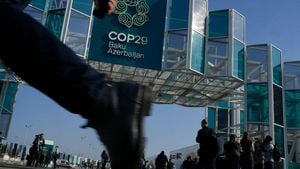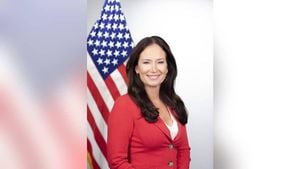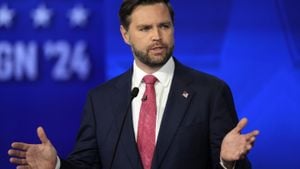NASA is facing more challenges with its Boeing Starliner project as two astronauts remain stranded aboard the International Space Station (ISS). Butch Wilmore and Suni Williams were initially slated to return home following their eight-day stay, which ended up extending to eight months due to the Starliner spacecraft's continued thruster problems. NASA administrator Bill Nelson announced during a press conference on August 24 at the Kennedy Space Center the decision to not attempt to bring them home using Starliner, instead opting for the safer SpaceX Crew Dragon spacecraft for their return.
This news marks another setback for Boeing, which has struggled with its Starliner program since its uncrewed launch on June 5. The decision, driven by safety concerns, reflects NASA's evolution since past tragedies such as the Challenger and Columbia disasters, which have made the agency exceptionally cautious.
“NASA has worked very hard with Boeing to reach this decision,” Nelson said, emphasizing the agency's commitment to astronaut safety. The decision stemmed from what NASA calls a flight readiness review (FRR), where representatives discuss the mission's status and determine if it is safe to proceed. This review is typically held before launches but can also happen mid-mission.
Ken Bowersox, NASA's associate administrator for space operations, explained the FRR process, stating, “We bring in representatives from all of the related centers, the technical authorities, the NASA engineering, and safety center flight operations. We listen to the status of the mission...and then we poll everybody at the end on whether or not they think we're ready to undertake the mission.” The scrutiny is much more rigorous now than it was leading up to past tragedies.
It was initially hoped Starliner would be able to safely bring Wilmore and Williams home, but time was running short. The spacecraft's batteries have limited lifespan, putting pressure on NASA to decide whether the crew could return aboard. Wilmore and Williams will instead ride the Crew Dragon back, which is scheduled to launch to the ISS next month for a five-month mission, marked for return to Earth earlier next year.
The history of NASA is riddled with tragedy stemming from flawed decision-making, leading to significant changes at the agency. Russ DeLoach, the chief of NASA safety and mission assurance, remarked on the improvements made since then, stating, “We did not have the governance structure...so at the time, the program managers pretty much had near-unilateral decision-making.” The reformed structure and risk assessment methods now prioritize crew safety.
Nelson’s press conference followed an intense review on August 23, which involved weighing the potential risks of suffering more mishaps. Even though the Starliner is currently grounded, the decision to return astronauts safely was non-negotiable for NASA leaders. Jim Free, the NASA associate administrator who presides over the program, confirmed the agency’s dedication to safety above all else.
While the decision may spare Boeing from additional embarrassment, it demonstrates NASA's unwillingness to compromise astronaut safety. This reflects the hard lessons learned from previous missions, which have left deep scars on the agency and its workforce. The ethos of accountability and competency has become embedded within NASA’s culture, with historical tragedies reminding staff of their responsibilities.
Gene Kranz, the flight director renowned for his pivotal role during NASA's Apollo missions, once said, “From this day forward, flight control will be known by two words: Tough and competent.” He urged his team to hold themselves accountable and to prioritize success. This still resonates within NASA today, shaping their stringent standards and mission protocols.
The overall string of complications faced by the Boeing Starliner program continues to test the resolve of both Boeing and NASA as they strive to pave the way for the future of crewed spaceflight. Wilmore and Williams now face the reality of spending considerable additional time aboard the ISS, which has turned from what should have been just days to months. With their next ride back promised to be aboard the SpaceX spacecraft, their return has transformed from the planned to the uncharted.
NASA's decision emphasizes the importance of safety over timeline, reflecting the agency’s legacy and adherence to lessons learned from its challenging past. The choice made at the Kennedy Space Center showcases how far the agency has come from the mistakes of earlier eras, prioritizing the well-being of astronauts on board spacecraft meant to explore the unknown. This pivotal moment serves as a reminder of the technological and human challenges posed by space exploration.



